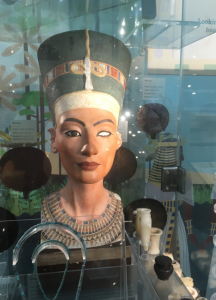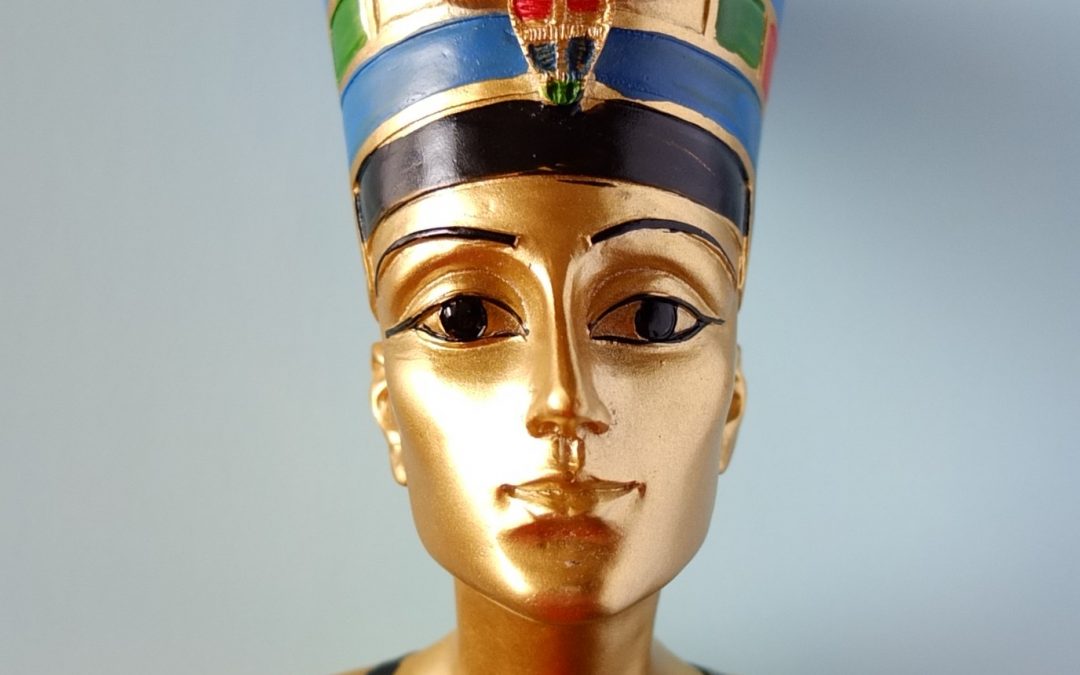 Dr Joyce Tyldesley has recently published a book on Nefertiti’s famous bust from Tell el-Amarna (currently in the Neues Museum Berlin), its manufacture, history and the many different ways in which museum goers and members of the public have engaged with it – and the many controversies its removal from Egypt has caused. In this blog she tells the story of how a replica Nefertiti bust inspired her interest in Egyptology as a child.
Dr Joyce Tyldesley has recently published a book on Nefertiti’s famous bust from Tell el-Amarna (currently in the Neues Museum Berlin), its manufacture, history and the many different ways in which museum goers and members of the public have engaged with it – and the many controversies its removal from Egypt has caused. In this blog she tells the story of how a replica Nefertiti bust inspired her interest in Egyptology as a child.
As a child growing up in Lancashire, I loved the gloomy Egyptian gallery in Bolton Museum. Here, hidden amongst the dusty pots and beads, could be found a whole treasury
of wonders: the Rosetta Stone, a partially unwrapped female mummy lying in a decorated coffin, a Peruvian mummy sewn into what looked like a sack, and the sculpted head of a beautiful woman named Nefertiti.

A replica of the famous Nefertiti Bust in the Bolton Museum
I don’t know how old I was when I realised that only the Peruvian mummy was exactly what it appeared to be. The “Rosetta Stone” was, of course, a reproduction of the original, which has long been a key piece in the British Museum’s collection. The Egyptian mummy was genuinely ancient, but male rather than female. Nefertiti’s head was less than a century old; a plaster copy of a bust on display in Berlin, and just one of a host of replica Nefertitis confusing visitors in museums throughout the western world.
The fact that there was an identical replica Nefertiti head on display in the nearby Manchester Museum should probably have alerted me to the fact that this was not a unique or even an ancient piece. Many years later, when my employment at the Manchester Museum allowed me the privilege of patrolling the Egyptology galleries, I came to realise that many adult museum visitors were making the same mistake. Nefertiti’s head was displayed in a case alongside real and replica Amarna artefacts. The label made make it clear that it was a replica, but few visitors read museum labels carefully. The replica looks old and slightly battered, and its presence within the museum – seen by many as an academically sacred space dedicated to truth – was confusing. We tend to assume that the artefacts displayed in museums are “real”. Today this confusion has been avoided by moving the replica head to a case dedicated to fakes and replicas.
The Bolton Nefertiti may have been a replica, but it was a beautiful object in its own right. It certainly sparked my own fascination with in ancient Egypt. Twenty-five years later this fascination led me to write a book about Queen Nefertiti; more recently I wrote a book specifically about her sculpted head. Today the Bolton version of Nefertiti is displayed in a bright, new gallery where, I hope, she will continue to inspire children to study ancient Egypt for many years to come.







Recent Comments